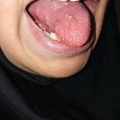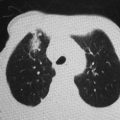, Ahmad Ameri1 and Mona Malekzadeh2
(1)
Department of Clinical Oncology, Imam Hossein Educational Hospital, Shahid Beheshti University of Medical Sciences (SBMU), Shahid Madani Street, Tehran, Iran
(2)
Department of Radiotherapy and Oncology, Shohadaye Tajrish Educational Hospital Shahid Beheshti University of Medical Sciences (SBMU), Tehran, Iran
Pericarditis is the most common acute presentation of radiation-induced heart disease. The incidence of pericarditis in patients with irradiation for different targets within and around the thorax is estimated around 5% on average and even less; indeed, with improvement in radiation treatment techniques, its incidence has decreased from 25% to 2% [1–3]. Clinically significant pericarditis is observed just in a limited percentage of patients after mediastinal radiation therapy [4].
Radiation-induced pericarditis most commonly occurs in Hodgkin and non-Hodgkin lymphoma and breast cancer patients [2]. It’s probably related to the incidence and survival of these malignancies. The risk of pericarditis is higher when the target volume for radiation therapy is in the mediastinum, and it will decrease with increasing distance between the target volume and the mediastinum and heart. Site and size of mediastinal lymphadenopathies are important factors in the incidence of pericarditis for lymphoma patients. With effective chemotherapies, target volumes and pericarditis rate have decreased in patients with lymphoma after mediastinal radiation. Besides these, pericardial manifestations have also decreased in lymphoma as well as breast cancer by radiation technique improvements [5, 6].
Pericardial effusion has been reported in one third of esophageal cancer patients following definitive chemoradiotherapy [7]. Wei et al. showed that pericardial effusion will develop in 73% of patients if more than 40% of the heart volume receives more than 30 Gy of radiation [8].
Although acute pericarditis is usually self-limited, the crucial point is the progression into chronic pericarditis and/or constrictive pericarditis in 10–20% of patients. However, chronic pericarditis may occur in some patients without any history of acute pericarditis [9, 10].
11.1 Mechanism
After mediastinal radiation therapy, there are some acute and chronic effects on the heart. Pericarditis is a dominant side effect among acute radiation-induced cardiac complications, and the essential factors in the acute phase are tumor necrosis factor (TNF) and interleukins (IL) (i.e., IL-1, IL-6, and IL-8) that cause neutrophil infiltration within the tissues [11]. Delayed radiation-induced pericarditis is generally the consequence of an acute inflammatory process followed by fibrin deposition. Injury is primarily initiated by microvascular damage, which causes episodic ischemia. The next stage is neovascularization with abnormal and permeable vessels, which lead to worsening of ischemia and fibrosis progression [12].
Fibrous thickening, pericardial adhesion, and effusion are pathological findings after radiation to the heart and pericardium. These findings are secondary to microvascular and mesothelial cell injuries. On the other hand, plasminogen activator decreases, and considering its usual role in fibrinolysis, high levels of fibrin are expected [13]. Pericardial effusions have high amounts of protein and fibrous adhesions and are also accompanied by high levels of serum inflammatory markers during the acute phase [10]. Mononuclear cells infiltrate the pericardium 2 days after radiation exposure in optic microscopy. Other histologic findings are bizarre fibroblasts (with abnormalities in the nucleus and cytoplasm), sclerosis of small vessels, and fat necrosis of the pericardium [14].
11.2 Timing
Acute pericarditis is uncommon, and it can present during or after radiation. It is usually detected by subclinical pericardial effusion [11, 15]. The presentation of pericarditis during the first year after radiation therapy, known as acute pericarditis, is usually a self-limited and benign disease [16], although it has been named radiation-induced late pericardial disease by others [15].
11.3 Risk Factors
Several factors increase the risk of radiation-induced pericarditis, but the percentage of irradiated pericardial volume and mean pericardial dose are the most important [3]. The percentage of cardiac silhouette irradiated could be as an index of pericardial volume. Other risk factors are the nature of radiation source and duration and fractionation of radiotherapy. There are some studies that determine the predictive parameters for radiation-induced pericarditis and pericardial effusion. Daily dose per fraction more than 3 Gy has been shown to correlate with pericardial complications [17, 18]. Mean dose to pericardium is a predictive factor for pericardium injury, and 27 Gy is a proper cutoff point in most studies [6, 8, 17].
11.4 Symptoms
As a common manifestation of acute pericarditis, patients present with chest pain, which usually includes characteristic pleuritic chest pain. This is accompanied by low-grade fever, dyspnea, and tachycardia [10]. Pericardial friction rub can be found on physical examination [13].
Patient signs and symptoms could be categorized into six groups depending on time elapsed from radiation exposure [19]:
- 1.
Acute pericarditis during radiation therapy, which presents with nonspecific symptoms including chest pain, fever, and EKG abnormalities.
- 2.
Late pericardial disease, which occurs during the first year of radiation therapy [15].
- 3.
Delayed pericarditis, which presents from months to years after radiation treatment (most references include the second half of late pericarditis timing). In this group of patients, the most common presentation is dyspnea; some others develop pericardial pain. Tamponade may also rarely occur in these patients [2]. Pulsus paradoxus (decreasing peripheral arterial pulse paradoxically during inspiration) is characteristic of tamponade [4].
- 4.
Pancarditis, which manifests as heart failure, is difficult to control. It is a rare compilation of heart radiation during the acute phase because of the delayed effect of radiation on the myocardium.
- 5.
- 6.
Asymptomatic pericardial effusion, which is an incidental finding by echocardiography.
11.5 Diagnosis
Considering positional pleuritic chest pain as a hallmark feature of acute pericarditis, an EKG is usually the first diagnostic study obtained. Diffuse ST elevation with or without PR interval depression could be seen, but sinus tachycardia may also be seen [15].
Chest radiography in patients with pericardial effusion may show cardiomegaly.
It is easy to detect loculated or generalized pericardial effusion by echocardiography by measurement of echo-free pericardial space. There are other signs on echocardiography (e.g., collapsing right atrium and ventricle in end-diastolic and diastolic phase, respectively) [4].
By using computed tomography (CT), pericardial effusion and thickening are showed and, in comparison to MRI, is more sensitive to detect constrictive pericarditis [4]. Normal thickness of the pericardium is less than 2 mm on CT scan and MRI. Thickened pericardium could be enhanced after IV contrast injection, which is a sign of inflammation and is used to differentiate between constrictive pericarditis and restrictive cardiomyopathy [20].
Serum inflammation markers, such as white blood cell count, erythrocyte sedimentation rate (ESR), and serum C-reactive protein (CRP), are usually elevated; serum cardiac troponin I levels may be minimally elevated. CRP as an acute phase protein can help in treatment monitoring in most patients that have elevated levels of this marker [21].
In patients with malignant tumors and pericardial effusion, at least three differential diagnoses should be considered. One of them is heart failure with pericardial effusion, which is secondary to low cardiac output. Another is malignant pericardial effusion, which could be accompanied by other metastases and is confirmed by positive cytological examination for malignant cells. A third differential diagnosis is hypothyroidism, which may be due to radiation to the thyroid [2].
Stay updated, free articles. Join our Telegram channel

Full access? Get Clinical Tree






